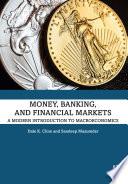With this in-depth, easy-to-use tool, your program can reliably assess and monitor social-emotional development in infants, toddlers, and preschoolers at risk for delays or challenges. An ideal followup to screeners such as ASQ:SE, the two-part SEAM(tm) assessment reveals detailed qualitative information on childrenâe(tm)s social-emotional competence-- and identifies their caregiversâe(tm) strengths and areas of need. Easy to learn and implement, SEAM can be used by a wide variety of early childhood professionals, including those with little or no training in mental-health or behavioral interventions. SEAM helps your program: support development of important social-emotional skills in order to minimize challenging behaviors build strong, proactive partnerships with families promote positive parentâe"child interactions in the critical first years of life assist with developing developmentally appropriate goals and intervention activities monitor child progress toward social-emotional goals SEAM is a two-part assessment; All forms are available in English and Spanish on the CD-ROM or e-book. SEAM Tool The main SEAM includes three intervals with different developmental ranges: Infant (2-18 months), Toddler (18-36 months), and Preschool (36-66 months). Each interval assesses 10 child benchmarks critical to social-emotional competence, including empathy, adaptive skills, self-image, emotional responses, and healthy interactions with others. SEAM is flexible enough to meet your specific needs--parents/caregivers can complete it independently, or you can conduct it jointly with them if they need extra guidance. The SEAM system also includes SEAM with Ages, an alternate version of the tool annotated with a helpful list of age ranges for each item. This version makes it easy to give caregivers general guidance on how social-emotional skills typically develop and where their childâe(tm)s development fits on the continuum. SEAM Family Profile The Family Profile assesses parent and caregiver strengths and helps identify areas in which they need more supports and resources to foster their childâe(tm)s social-emotional skills. Like the main SEAM, the Family Profile assessment includes three intervals--Infant, Toddler, and Preschool. Each interval measures four benchmarks key to a nurturing home environment: responding to needs, providing activities and play, providing predictable routines and an appropriate environment, and ensuring home safety. List of SEAM benchmarks Child participates in healthy interactions Child expresses a range of emotions Child regulates social-emotional responses Child begins to show empathy for others Child attends to and engages with others Child explores hands and feet and surroundings (for infants)/demonstrates independence (for toddlers/preschoolers) Child displays a positive self-image Child regulates activity level Child cooperates with daily routines and requests Child shows a range of adaptive skills View the webinar recording of Using the Social-Emotional Assessment/Evaluation Measure (SEAM(tm)) with Young Children, presented by Jane Squires, Ph.D., and Misti Waddell, M.S. See which domain of school readiness in the Head Start Child Development and Early Learning Framework this tool addresses.
List of SEAM benchmarks Child participates in healthy interactions Child expresses a range of emotions Child regulates social-emotional responses Child begins to show empathy for others Child attends to and engages with others Child ...








